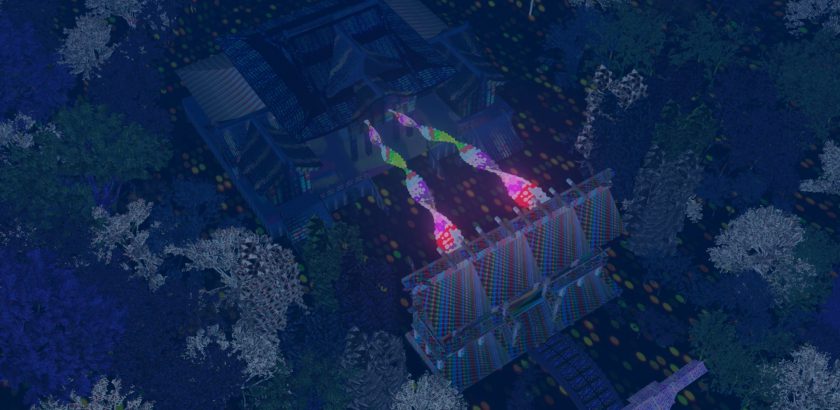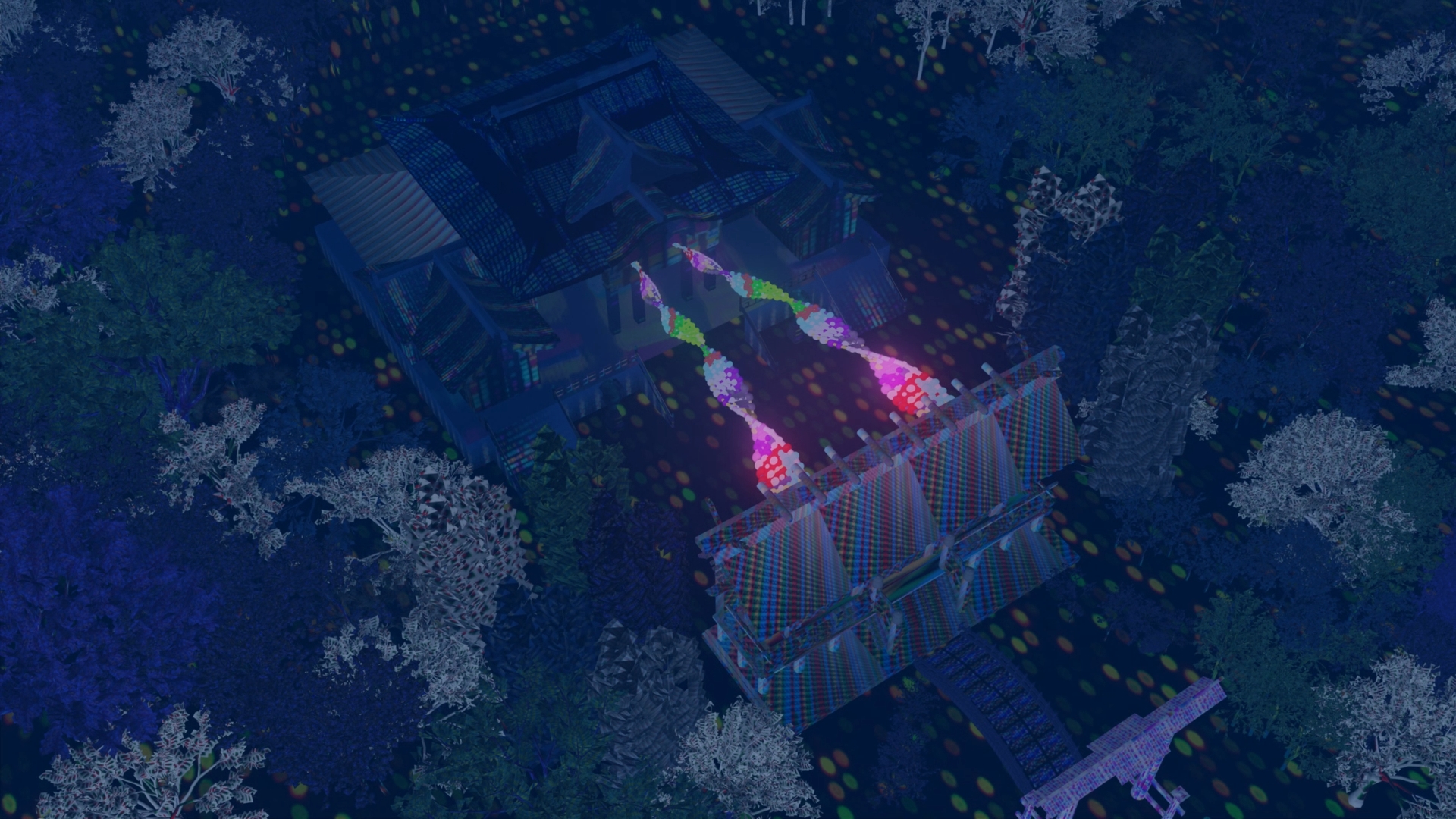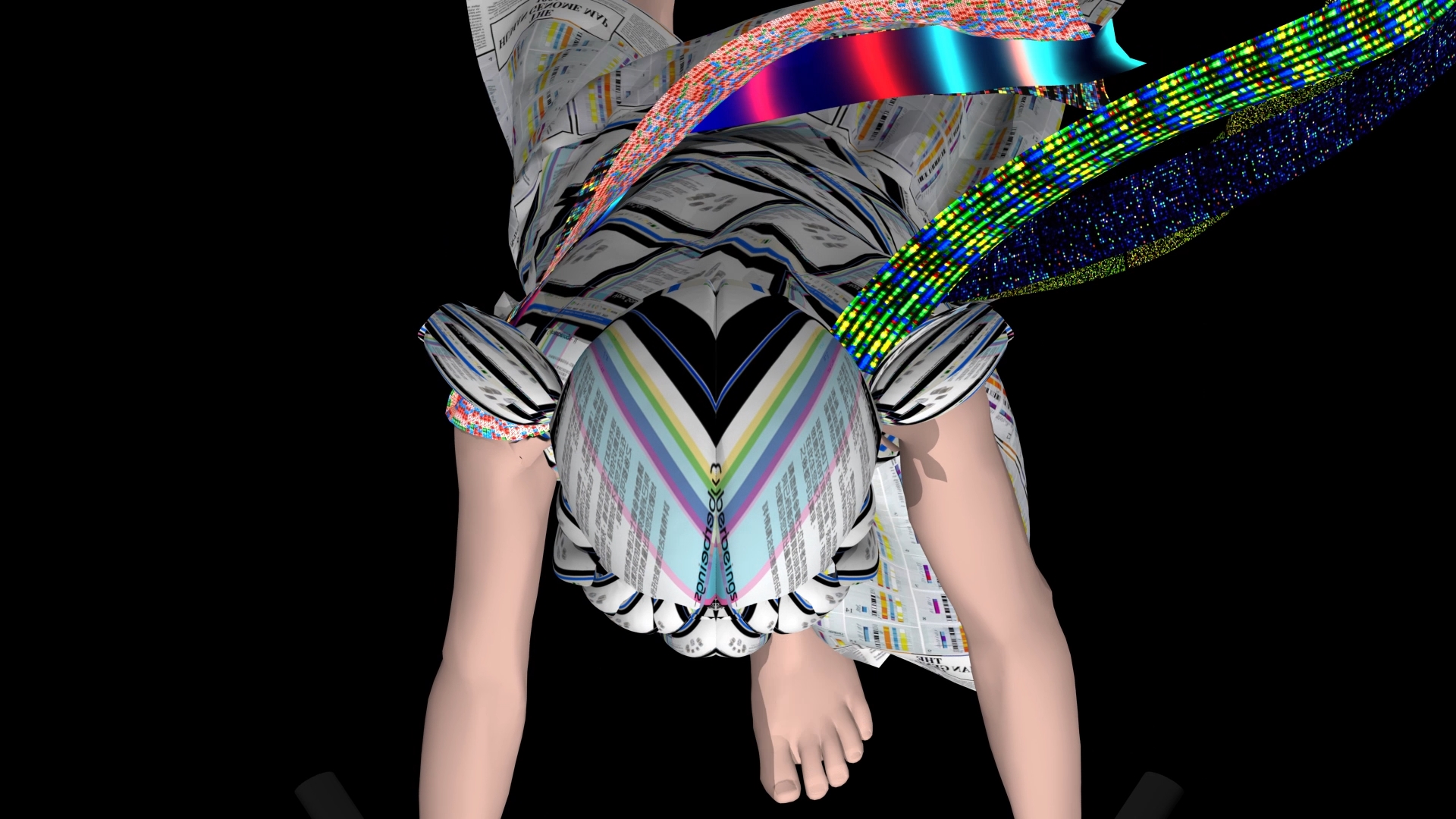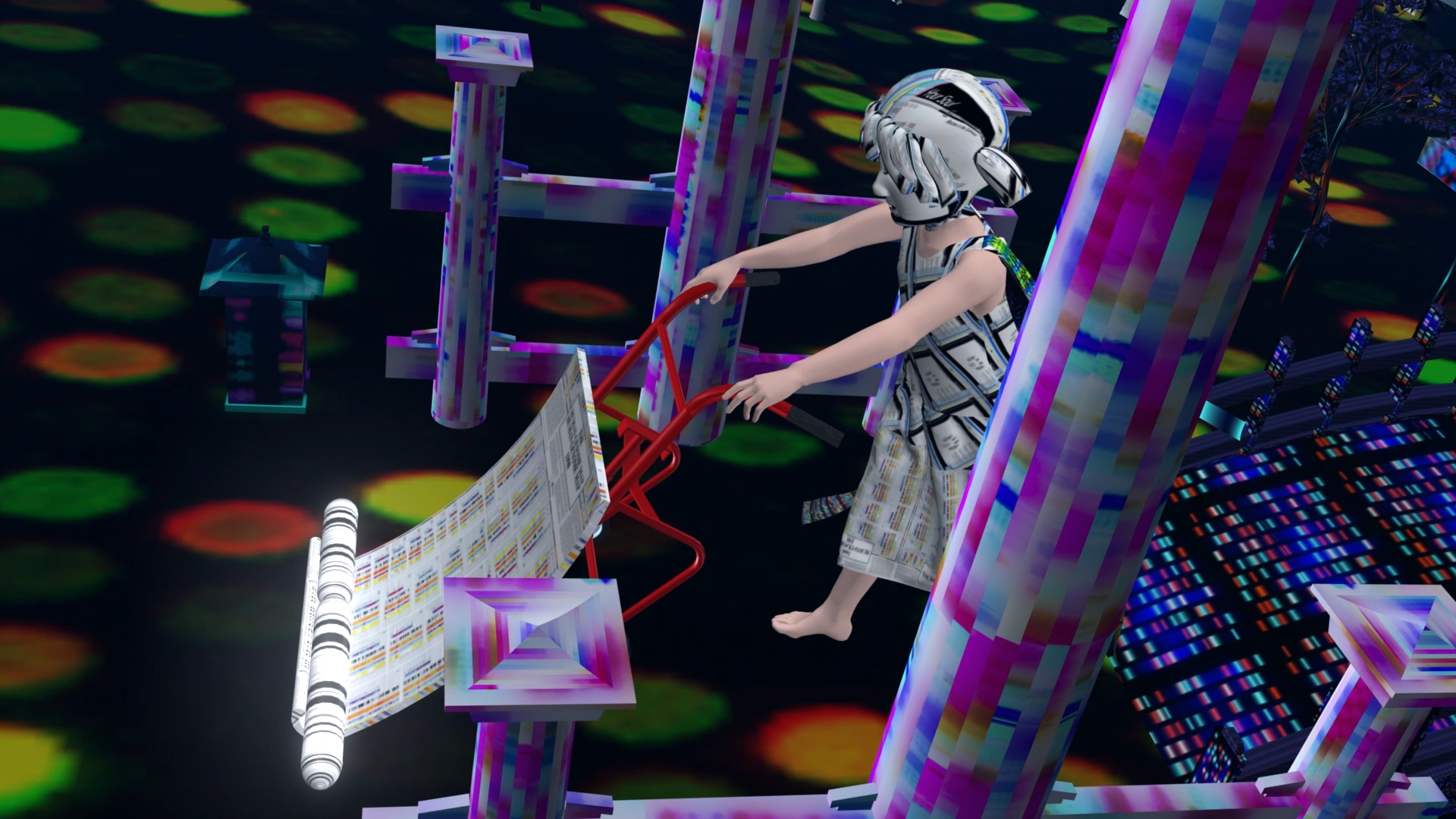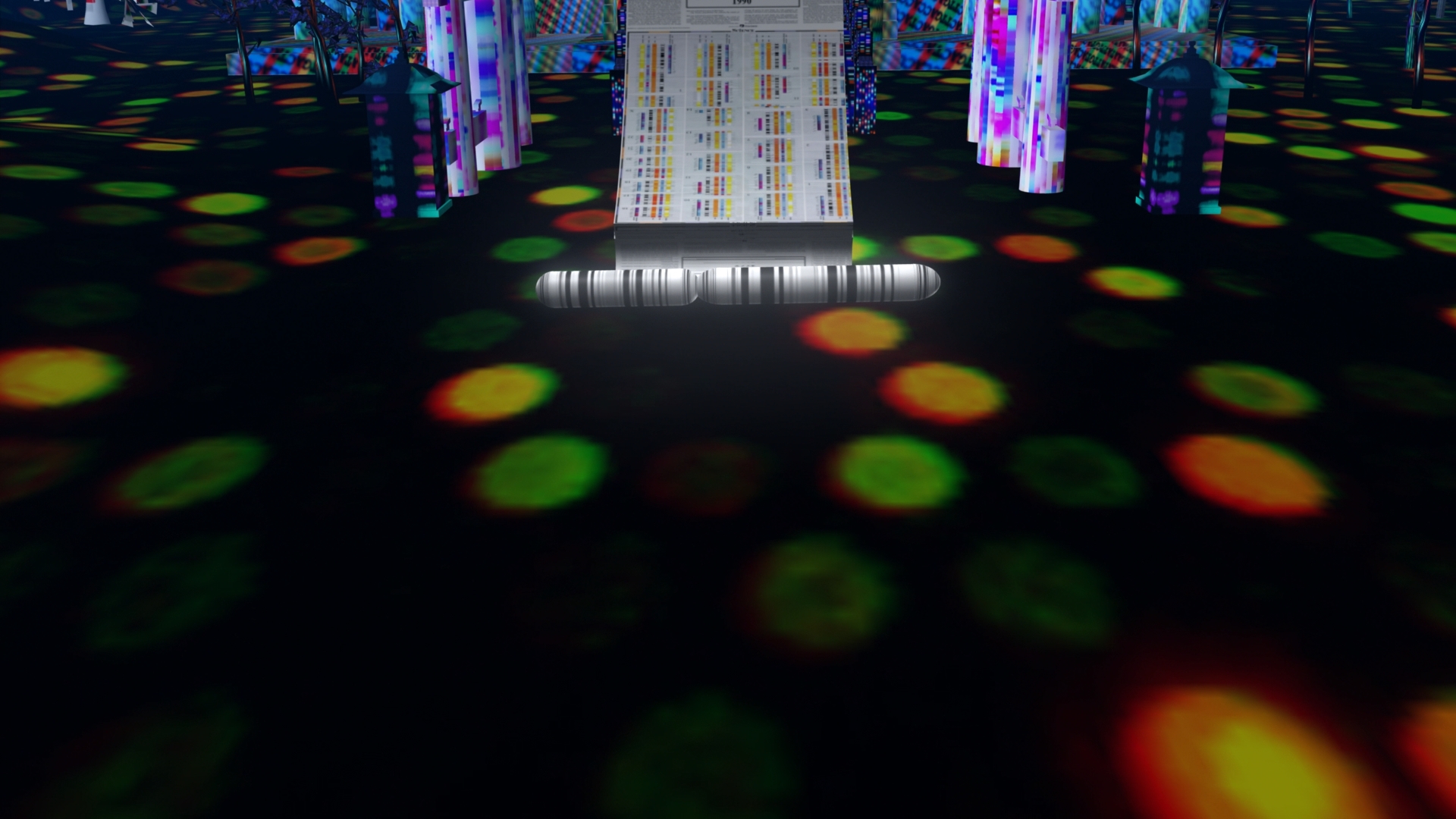吳梓寧,3D 動畫、人類基因組計畫網路資源,1920*1080 像素,彩色,有聲,56 秒,2016。
Tzu-Ning Wu, 3D Animation, Human Genome Project Open Source, 1920*1080 Pixels, Colour, Sound, 56″, 2016.
創作發想來自於「人類基因組計畫」(Human Genome Project)已宣告幾乎完成人類基因定序,另一方面Google 在人工智能研發已取得將亡者的人格數據化並下
載至智慧機器與生者互動的專利,這些科技進展將如何改變人類對於意識與記憶的看法。「後人類記憶」已不僅是有生之年的意識與記憶範疇,而是銘刻在蛋白質身體中之的DNA 編碼,甚至累積眾多的「前世」記憶等待延續至「下一世」的生命中。因此,《網路後世》這組作品可視為延續作者在2005 年《網路靈魂銀行》關於靈魂不滅、心智記憶數位化的創作觀念的發展。《網路後世》以3D 動畫結合基因定序的圖像作為貼圖,可以看到DNA「鹼基對ATCG」基因定序所呈現的科學頻譜圖像,取代《網路原民》的網頁快照做為新的貼圖,網路原民女孩也換裝,穿上仙姑一般飄動著彩帶的服裝,推著手推車從掛有DNA 雙螺旋結構燈籠的寺廟建築走出來,手推車上放置染色體形狀的「籤詩」,最後籤詩落入了地板的裂口中,而銜接到《基因求籤販賣機》的互動程式開口,等待觀眾透過互動去點選並撿拾。
This work is inspired by the fact that the Human Genome Project has almost been broken off as Google has acquired the patent to download digitalised personality of the dead to a machine that can make interactions with the living. The artist is fascinated by how the technological progress has changed people’s concept of consciousness and memory. “Post-human memory” has become something more than living memory and consciousness – it is something that is now being coded into the DNA of our protein. It could accumulate through generations, and eventually be passed on to the next life. Therefore, Cyber Samsara can be seen as a
development of the concept behind Cyber Soul Bank (2005), which was about the eternal soul and digitalised mind. The artist uses 3D animation of the base pair ATCG from DNA as the surface to replace the website snapshots in Cyber Native. The girl, who now has a new costume with the billowing ribbon, walks out of a temple decorated with lanterns that resemble the double helix structure of DNA. With a pushcart, the girl delivers a chromosome that drops off from the edge of the cart into an abyss. The work continues in Cyber Samsara Divination Machine , where viewers could interact with the installation by picking up the chromosome through the APP.
